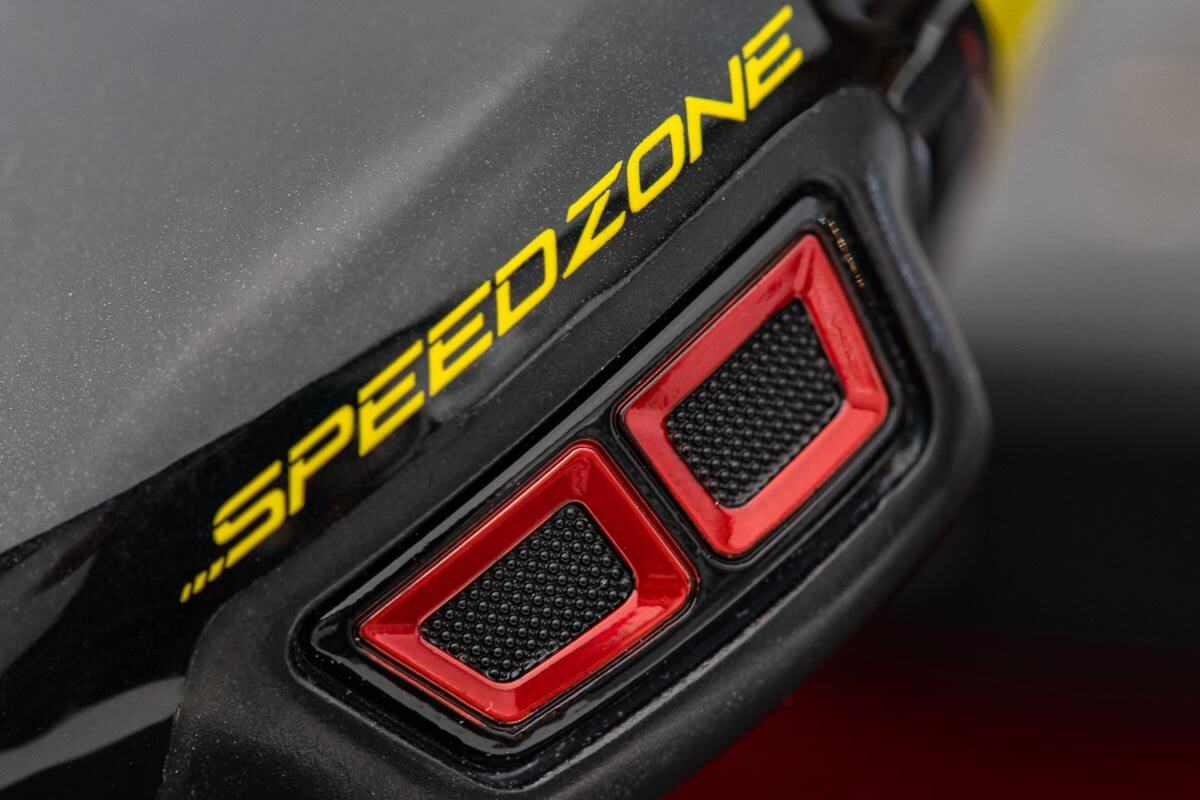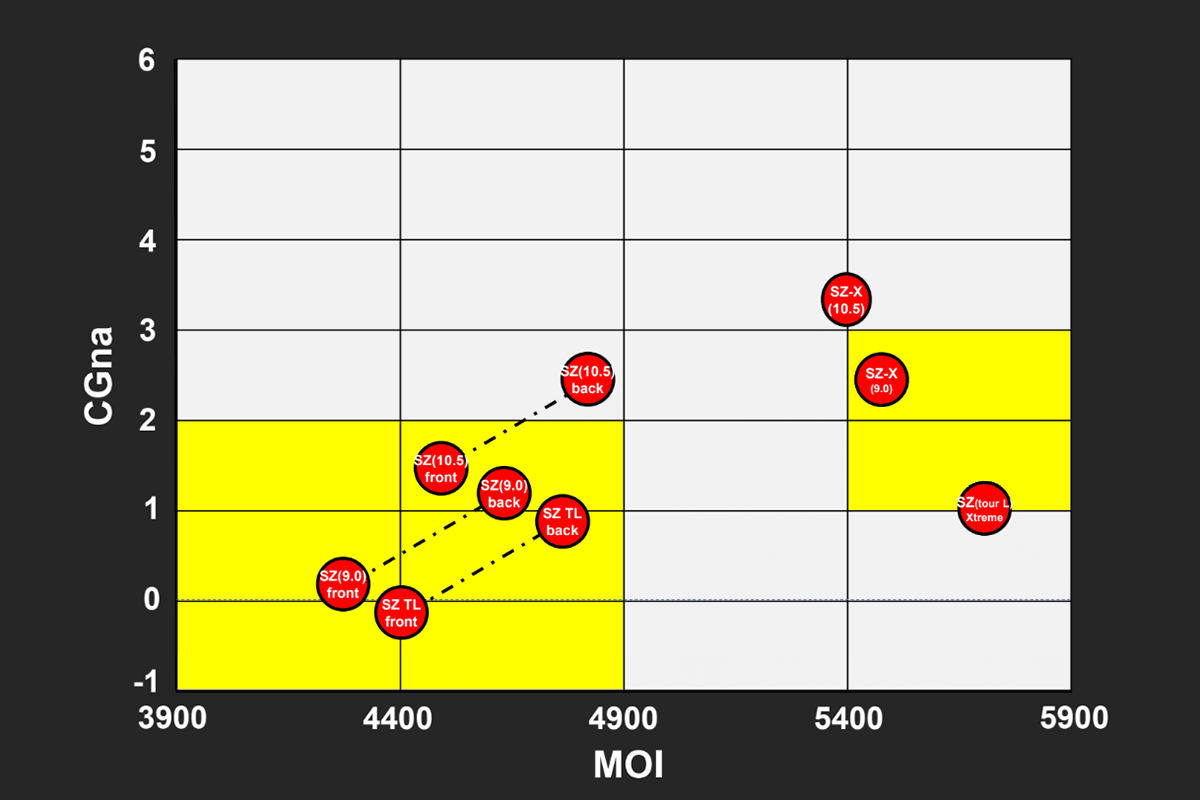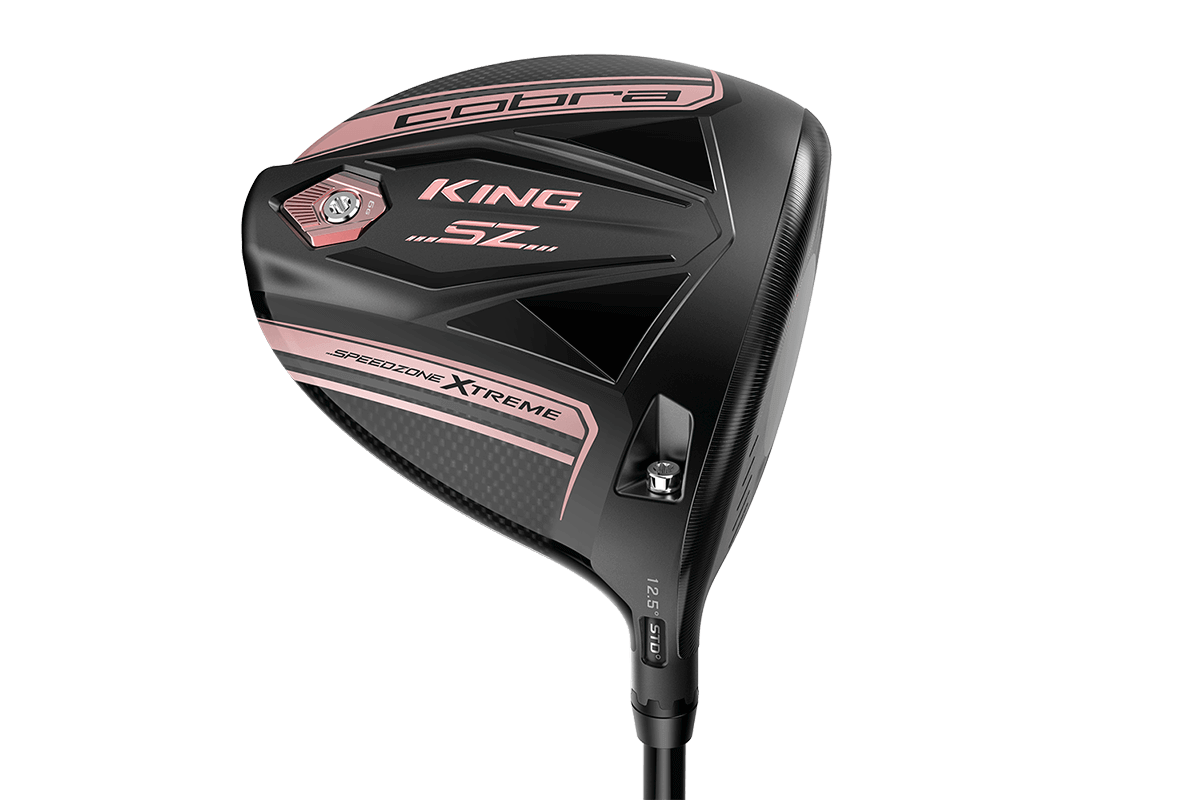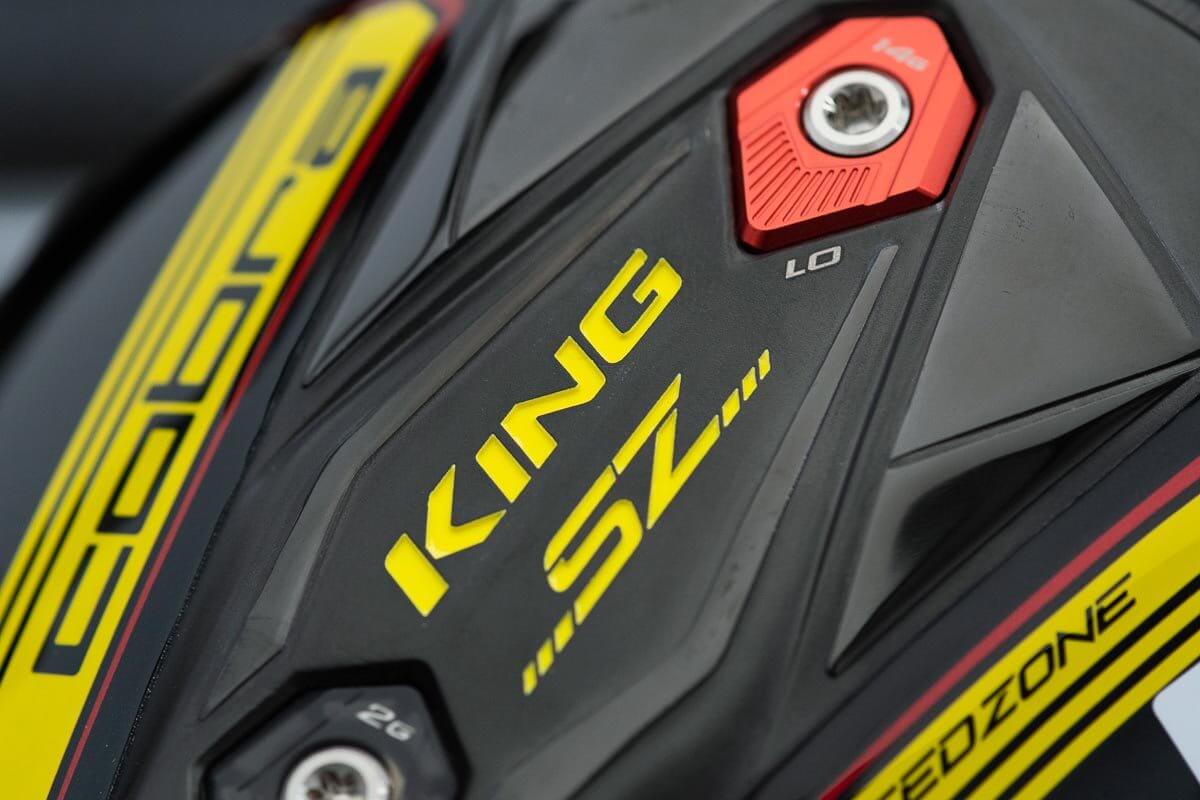In the golf equipment world, and in the driver category in particular, if a brand promises ground-breaking, game-changing, or any other kind of performance breakthrough that can’t be expressed without the help of a hyphen, you can be all but certain that it’s blowing enough smoke up your ass to cook a brisket.
The USGA’s leash is short on slack, and that mandates a reality where club engineers must work exceptionally hard to make modest year over year performance improvements. The simple fact of the matter is that while speed remains, and may always be the name of the game, real velocity gains are hard to find, and better performance almost always comes from small improvements in materials and construction.
“It’s not CT, it’s CG,” says Tom Olsavsky, Cobra’s VP of R&D.
Translation: It’s not more speed, it’s better distribution of weight that’s going to help golfers get just a little bit more out of their drivers.
You’re probably not going to hear that in any of its commercials next season, but it’s why when Cobra touts No Limits – the tagline for its 2020 product line – it’s not talking about skirting USGA rules. It’s an expression of the brand’s willingness to explore every possible avenue to find each bit of additional performance it can. If that means taking an unconventional approach and doing things that its competitors can’t or won’t, so be it.
Those are the design realities, but improved mass properties and tighter tolerances don’t really move the needle at retail. The market demands speed. Always. It’s not enough for a driver to be fast; it has to look fast. And that brings us to the requisite backstory.
Speedzone Inspiration
In creating the Speedzone family, Cobra says it took inspiration from Formula 1. It’s a style of racing that epitomizes speed, and the general idea is whatever you might do to improve the performance of a racecar you might want to do to improve the performance of a driver.
To that end, Cobra looked to improve performance in 6 areas – you might call them speed zones. Those zones are Power, Strength, Low CG, Light(er)-weight Materials, Aerodynamics, and Stability.
There’s a reasonable balance of logic and marketing in this part of the story, but since it provided the justification for letting me drive a Lamborghini at Cobra’s recent media event, I’m okay with it.
Within Cobra’s 6 zones, there’s plenty of overlap, so I think it makes sense to focus on the two pieces of the story that bring everything together.
Infinity Face
Cobra’s updated milled face technology – Infinity Face – has nothing to do with racecars. It borrows its name from those edgeless infinity pools you typically find at high-end resorts that I can’t afford. This milled face design, which debuted with the F8 driver, describes an enhanced milling pattern that extends beyond the edge of the face. Oh, and so you never forget what we’re talking about here, Cobra went ahead and milled an infinity symbol in the center of the face.
Why does this matter? The symbol itself doesn’t, but several benefits come from CNC milling the face, and several more that come from milling beyond the edge.
Let’s start with the simple and surprising one:
Improved (or break-even) Aerodynamics
In addition to providing some degree of alignment benefit at address (your mileage may vary), Cobra says the milling marks along the topline, which it calls Micro Flow Energizers, provide an aerodynamic boost.
Look, I’m not an aerodynamicist, I don’t have access to a wind tunnel to verify this stuff, and, for what it’s worth, I didn’t stay at a Holiday Inn Express last night either. Frankly, this feels like one of those things that will be disputed in a competitor’s conference room at a later date, but Cobra’s story is that the leading-edge milling lines work as mini aerodynamic trips, which help to reduce drag and maintain speed throughout the swing. It’s why Speedzone drivers lack the polymer crown features found on F8 and F9.
Short version: the visible business on the leading edge of the crown allows the golfer to see the face angle at address while creating a look that’s cleaner overall and possibly more aerodynamic. I’ll also mention, as I typically do in these situations, that aerodynamic benefits disproportionally benefit higher swing speed golfers. If you swing much below 100 MPH, you’re not likely to see any quantifiable benefit from any of this aerodynamic stuff anyway.
More Ball Speed
Yes, there is a ball speed story, and moving to the middle of this list may amount to burying the lede, but the reality here is a bit more nuanced than faster, longer, infinity more yards!
As with everything else in the driver world, there is a speed element to the Cobra Speedzone story. It’s literally in the name. It starts with the milled area of the infinity face being 95% larger than it was in previous models which gives Cobra more precise control over nearly twice the face area as compared to the F9.
By extending the milling beyond the edges, and aided by what it calls CT Pads in upper and lower center portions of the leading edge, Cobra says it’s able to raise ball speed across a greater percentage of the face. It’s difficult (if not impossible) to speed up the perimeter without speeding up the middle, so Cobra leverages a rhomboidal-shaped e9 pad to increase thickness in the center region of the face to bring CT back to within USGA limits.
It’s your basic off-center ball speed story, and the larger point is Cobra is giving you just a little bit more speed over a larger area of the face.
What golfers may not fully understand is that even if 100% of the face were at the USGA limit, you’re still going to lose speed on miss-hits. Off-center strikes cause the head to deflect, and with that, ball speed loss is inevitable. Just something to keep in the back of your head when everyone is talking about boosting CT across the face.
So yeah, just like everyone else, Cobra talks about pushing ball speed (CT) up to the legal limit. With all of the controversy surrounding failed CT tests on tour, it’s worth taking a moment to explore what this actually means.
By the letter (or I suppose the number), the USGA limit for driver CT is 239 microseconds. You’re allowed 18 microseconds worth of tolerance for things like club manufacturing variance, CT gauge variance, and the guy taking the measurement too. That gets us to an absolute limit of 257 microseconds (the limit of the limit). There’s also an unofficial limit of sorts around 250 microseconds. If test parts exceed that number, the USGA will likely take a closer look to make sure hot heads haven’t made it out into the wild.
Much to the USGA’s chagrin, nobody is designing to 239, because while 239 might be the limit, it’s slower than designers need (or want) to go. Typical CT targets are somewhere in the range of 242 to 246 microseconds. While that’s not a huge difference (10 CT points are worth about ½ MPH of ball speed), in a launch monitor battle, every little bit counts, and every manufacturer knows it.
When asked about Cobra’s CT targets, Tom Olsavsky declined to be specific, saying only “Our CT targets are to be legal.”
It’s almost certainly within that gray area between 239 and non-conforming where the most significant benefits of Infinity face can be found.
Improved Consistency
Milling is significantly more precise than hand polishing. And really, polishing is an intentional misnomer the industry uses because polishing sounds more delicate and precise than grinding, which is a better description of the process used to finish most golf clubs and every other driver face.
Milling yields significantly tighter tolerances. That’s deeper in the weeds that most golfers will care to wade, but you should appreciate the significant differences it makes for the consistency of finished parts.
For example, the standard deviation of the top roll radii of Cobra’s milled parts is 3mm compared to 13.2mm with hand-polished parts. The numbers are similar for bulge radii. If that’s Greek to you, understand that roll radii impacts launch and spin consistency, while bulge plays a significant role in direction and dispersion. Do you really need me to tell you why this matters?
Ultimately the story Cobra wants to convey is that by milling its driver faces, it’s able to deliver a finished product that’s much closer to the design spec than what it believes you’ll get from its competitors – all of whom still polish their driver faces by hand.
CNC Milling also allows for more precise control of face thickness. That means Cobra should have greater control over its CT tolerances. It’s a more challenging story to tell than the commercially digestible Speedy McFast Face stuff we’re accustomed to, but what we’re really talking about (again) are bell curves and standard deviations. With more control over a larger portion of the face and the increased consistency that comes from milling, Cobra can narrow its manufacturing tolerances while bumping its CT targets a bit closer to the limit. Theoretically, that means that nobody gets a driver with a CT above 257, but nobody gets one much under 239 either.
Here’s an unpleasant fact you won’t find in any driver ad. While everyone says their drivers CTs are at the limit, the limitations of modern manufacturing say otherwise. Some degree of manufacturing variance is unavoidable, so there is a connection to be made between more speed and tighter tolerances. Cobra’s milled infinity face isn’t about pushing speed over the limit; it’s about ensuring that every head that leaves the factory is as fast as the rules allow.
Reimagined T-Bar Chassis
While it lacks the elegance and style of a Formula 1 car, there’s a case to be made that the T-Bar chassis of the Speedzone driver took its inspiration from Joe Dirt’s Trans Am. Who didn’t want a T-Top back in the day?
I probably shouldn’t trivialize this because the new design is a significant departure from anything we’ve seen to date. My hunch is it may well become another example in a storied line of Cobra innovations that others quietly integrated into their designs.
Historically, composite driver construction has featured a composite crown piece glued to the titanium ledge of a predominantly titanium body. With Fly-Z, Cobra integrated weight-saving composite panels into the sole. That particular style of construction has become common across nearly all manufacturers leveraging composites in driver construction.
With F9 Speedback, Cobra integrated what it called a Carbon Wrap crown. Instead of resting on top of the driver, Cobra extended its use of composite material into the skirt section of the driver (the area immediately beneath the crown), and fundamentally changed the shape of the head – driving more mass low and deep. That carbon fiber skirt and Speedback shape served as a stepping stone to get us to Speedzone.
The goal in using carbon fiber is always to pull weight from where you don’t need it (often the top portion of the driver), so it can be repositioned where it provides real benefit (some combination of low and back). With Speedzone, Cobra is taking a radical (by golf standards anyway) approach to head design.
With the new 360 Carbon Wrap design, instead of sitting on top of the frame, two large pieces of carbon fiber wrap around the T-bar body, and are joined in the center portion of the frame. The result is a driver body that’s 50% carbon fiber (10% more than F9). That frees up 6.3-grams of discretionary weight. I realize that doesn’t sound like much, but there isn’t a driver designer working today who wouldn’t love to have a bit more than 3% of the total head weight to play with. It may look like a small number, but 6.3 grams is kind of a big deal.
Cobra took the weight it saved with the new chassis and other design tweaks and put it into a pair of heel and toe weight pads for stability, and added what it calls an Exhaust Weight (mass and material varies by model) in the extreme rear of the club. To keep this whole racecar theme going, it hid the Exhaust Weight behind a tailpipe detail at the rear of the head.
In total, Cobra was able to position up to 69-grams of weight low and back (in the lowered Speedback portion of the club).
These types of mass properties improvements (CG location and MOI) are at the forefront of every Cobra driver discussion we’ve had for the last several years. You’re getting higher launch, a lower spin option (if you need it), and increased MOI throughout the lineup.
And of course, you’re benefitting from the consistency that comes from the CNC Milled Infinity Face.
2.5 Different Models
Last season’s F9 Speedback was available in one model only. Well, sorta.
The 9° version had a more forward center of gravity (lower spin) and filled the role of the Plus models from prior generations. 10.5° and 12° versions of F9 had slightly different mass properties that made them play a bit more like what used to be the standard model. Higher trajectory, more forgiving, etc..
This year Cobra is moving back to a two-model lineup, though it’s pulled a bit of a Titleist and flipped the script on performance properties and naming conventions. The standard version of the Speedzone is more like what Plus used to be, though again, there’s some loft-driven nuance.
Let’s see if we can make sense of it.
Speedzone
The Speedzone (no suffix) is perhaps the closest to a Plus model. Both the 9° and 10.5° models feature movable flip zone weighting (14g and 2g). As you likely know by now, placing the heavier weight in the front will lower launch and spin and provide a more penetrating trajectory. Placing the heavier weight in the rear will provide a more towering trajectory, a bit more spin, and higher MOI.
The 9° model has a 5-gram steel Exhaust Weight, while the 10.5° model offers a 7.2-gram tungsten Exhaust Weight. As with the F9 Speedback, it’s a small distinction intended to tweak the mass properties to optimize performance for the player most likely to fit into each loft.
Speedzone Xtreme
New, or perhaps BACK, this year with a new name is the Speedzone Xtreme. It’s the higher MOI complement to the lower spinning standard SZ. It has a larger address footprint (it looks bigger), doesn’t offer movable weights, and because forgiveness is the name of this particular game, it has a significantly heavier (17-gram) Tungsten Exhaust weight.
With MOI around 5500, it should prove to be one of the most forgiving drivers on the market in 2020.
The Speedzone Xtreme is available in 9°, 10.5°, and 12°. A 12.5° Junior version is also available.
For those wondering if Cobra might release a smaller driver along the lines of the AMP Cell Pro, TaylorMade M5 430, or a Titleist M4, don’t hold your breath. Olsavsky dismissed the idea saying, “We’re a for-profit company.”
All Speedzone drivers feature 3° of MyFly Loft adjustability (1.5° in either direction) with draw settings available in neutral, +1°, and -1°.
Mass Properties (CGna & MOI)
If you’re wondering what all of that looks like from a mass properties standpoint, Cobra says it looks like this:
If you’ve never seen a chart like this before, for context on what this means and why it matters, I suggest starting with our 2019 CG and MOI report.
Two Lengths
As you can see on the mass properties chart above, Cobra is also offering SZ TL Drivers. We’re not talking about an entirely different model here. The TL stands for Tour Length, and it means that the shaft is 1” shorter than standard (44.5” instead of 45.5”). That measurement includes the Cobra Connect sensor embedded grip.
To maintain swing weight at shorter lengths, mass needs to be added to the head. To balance things out, the SZ TL ships with 18g and 6g weights. The SZ Xtreme TL ships with a 14-gram weight.
With more weight added to the head, the center of gravity is pushed lower (higher launch/ lower spin) and farther back (higher MOI). Golfers looking to maximize forgiveness and control should give serious thought to the SZ Xtreme TL. The shorter shaft should prove more accurate, while the additional head weight pushes the MOI above 5700.
Two (Men’s) Colorways
(Yeah, uh-huh, you know what it is)…Black and yellow with red accents remains Cobra’s signature colorway, the company will again offer an alternative option for those who prefer things a bit more muted.
Following up on last year’s off-white Avalanche, the secondary color offering is a matte black and white offering, also with red accents.
A women’s model is available in Gloss Black/Rose Gold.
Four Shafts
As fitting has become a more substantial part of the conversation, manufacturers have expanded their stock shaft lineups to include multiple launch and spin profiles. That’s the case with the Speedzone lineup.
The UST Helium (Lite, Regular), with updated black paint, fill the high launch/mid spin slot. Mitsubishi’s Tensei AV Blue 65 (Regular, Stiff) is the mid launch/mid spin offering. The Project X HZRDUS Smoke Yellow 60 (Stiff, X-Stiff) is billed as mid launch/low spin, while a 110 MSI version of the Aldila Rogue Silver 65 (Stiff, X-Stiff) is your low launch/low spin offering.
If none of the above suit your needs, an additional 20+ no upcharge shafts are available through Cobra’s custom department.
Cobra Connect Included
As it has for the last several years, Cobra will again include Cobra Connect (powered by Arccos) sensors at no extra charge.
Golfers who purchase a Cobra Connect enabled driver will receive a special offer for Arccos sensors for the rest of their clubs. The annual subscription fee for Arccos is $99.99.
The Soft Sell
This is the part where I’m supposed to say something so bold that, not only will you immediately run out and buy (or at least try) the Cobra Speedzone driver, Cobra will paste my words into next year’s media presentation.
I’m not going to do that…at least not on purpose. The fact is that you should already want to try Speedzone. Over the last several years, Cobra has been the industry’s biggest innovator in the driver category. What it has lacked in hype, it has made up for with a resolute focus on improving performance through better mass properties. I’ll concede that’s not nearly as sexy as twist faces and supercomputers, but it’s a recipe that’s led to the creation of a growing list of high performing drivers that are every bit the equal (and often the superior) of those from bigger brands wither deeper pockets and louder voices.
It should be reason enough for you to take a Cobra Speedzone into the demo bay with you when you’re hitting new drivers. Why wouldn’t you?
If that’s not enough, consider that the Cobra Speedzone driver has a retail price of only $450. That’s $50 less than Titleist and PING, $75 less than Callaway, and $100 less than TaylorMade.
You earned it, spend it however you like, but if you haven’t taken a serious look at Cobra, you could be wasting your money.
All SPEEDZONE products, including Speedzone and Speedzone Xtreme Drivers, are available at retail and online beginning January 17, 2020. For more information, visit Cobragolf.com.


































Mike
4 years ago
Can shafts with the F9 connector / tip be used on the New 2020 Model?